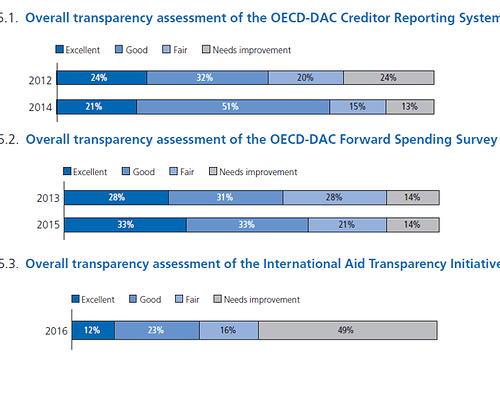The Global Partnership’s new “Transparency Indicator” report has been published.
Remember that this indicator was designed to track progress of paragraph 23 c) of the Busan Partnership agreement
Implement a common, open standard for electronic publication of timely, comprehensive and forward-looking information on resources provided through development co-operation, taking into account the statistical reporting of the OECD-DAC and the complementary efforts of the International Aid Transparency Initiative and others. This standard must meet the information needs of developing countries and non-state actors, consistent with national requirements. [my emphases]
If you skim Chapter 5 this is what you will see:
The IATI Secretariat and Technical Team has been involved in the preparation of our statistics for this report for over a year. These are the statistics that you can see on our Dashboard, and which are refreshed every night. I stand by this work and believe we have reflected - honestly, fairly and as accurately as possible - the current (and improving) status of IATI data.
According to the statistics we submitted to the progress report 35% of IATI publishers (only those that endorsed the Busan agreement) publish good or excellent data. By comparison 72% and 66% of reporters to the OECD DAC Creditor Reporting System and Forward Spending Survey respectively are reported to meet this standard.
If this is truly a fair comparison of timely, comprehensive and forward-looking data that meets the needs of developing countries I can only conclude that there remain huge gaps in our understanding of what is meant by transparent, usable data.

